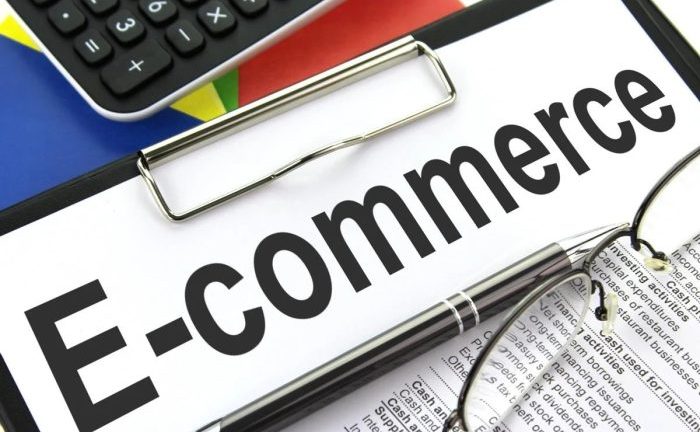Starting an e-commerce business in Pakistan can indeed be a complex endeavor, mainly due to the challenges posed by limited payment processing options. Nonetheless, it’s worth noting that the e-commerce industry in the country is on a rapid growth trajectory, offering promising prospects for budding entrepreneurs. In the year 2023, the predicted market size for e-commerce in Pakistan is an impressive US$6,724 million, outpacing the growth seen in many other developing nations. Furthermore, this revenue is anticipated to maintain a healthy growth rate of 6.1%, ultimately reaching a substantial market volume of US$8,500 million by 2027.
For individuals aspiring to venture into e-commerce entrepreneurship, it is vital to gain a comprehensive understanding of the key steps involved in establishing an e-commerce enterprise in Pakistan in 2023.
E-commerce Business Models:
1. Business to Consumer (B2C):
This model involves companies directly marketing their products or services to end consumers. It encompasses various everyday transactions, such as buying groceries, dining at restaurants, streaming movies, and scheduling haircuts. Within the B2C model, several subcategories exist:
- Direct-to-consumer (DTC) e-commerce: Manufacturers directly sell their products to consumers without intermediaries like retailers or distributors.
- Online intermediaries: These platforms connect sellers with consumers, earning a commission for facilitating each transaction.
- Advertising-based models: These platforms offer free information or services, generating revenue through advertising displayed on the website.
- Community-based sites: Such platforms target ads to users based on demographics and location, commonly observed on social media networks.
- Fee-based models: Companies charge fees for providing specialized information or entertainment, often seen in subscription-based services.
Recent years have witnessed a significant surge in online B2C sales, prompting traditional brick-and-mortar retailers to integrate digital channels into their strategies to meet customers’ preferences for online shopping. This approach, known as omnichannel e-commerce, offers a seamless customer experience by providing options for online orders along with in-store pickup and return services.
To excel in the B2C e-commerce model, businesses must employ a flexible and responsive e-commerce platform that can efficiently cater to customer needs.
2. Business to Business (B2B):
In the B2B model, companies market their products or services directly to other businesses. B2B e-commerce can be classified into two primary methodologies: vertical and horizontal.
- Vertically oriented businesses: These focus on selling products exclusively to customers within a specific industry.
- Horizontally oriented businesses: They target customers across multiple industries, aiming for broader market coverage and diversification.
Both vertical and horizontal approaches have their own set of advantages and considerations. Vertical B2B businesses benefit from their industry-specific expertise and the ability to penetrate their chosen market deeply. Conversely, horizontal B2B businesses enjoy the advantage of reaching a wider array of industries.
Traditionally, B2B enterprises lagged behind their B2C counterparts in terms of adopting e-commerce and digital sales strategies. However, with the emergence of tech-savvy B2B buyers who seek convenience, personalization, and integrated experiences, B2B brands are now embracing e-commerce to meet these evolving consumer demands. In fact, a recent report by Gartner predicts that by 2025, a staggering 75% of B2B manufacturers will engage in direct sales to customers through digital commerce channels. This shift underscores the growing significance of e-commerce in the B2B sector.
Consumer to Business (C2B):
While most business models traditionally originate from a company’s perspective, there’s a growing trend toward models driven by consumers, like the consumer-to-business (C2B) model.
In the C2B eCommerce business model, individuals have the chance to directly sell their offerings to companies. This typically happens through online platforms that allow individuals, like freelancers or independent contractors, to showcase their skills and expertise. Companies can then request services or submit bids for specific projects, and the individual gets paid through the platform.
A well-known example of a C2B business is Upwork, a freelancing platform connecting organizations with skilled individuals. Upwork acts as a “work marketplace,” helping businesses find and hire project-based support across various fields, from software development and content creation to UX design and financial services such as bookkeeping or tax assistance.
Another emerging example of C2B eCommerce is influencer marketing platforms like Upfluence or GRIN. These platforms bridge businesses with individuals who offer their services to enhance brand visibility through social media promotion.
Consumer to Consumer (C2C):
The consumer-to-consumer (C2C) eCommerce business model has thrived with the rise of digital commerce. Notable C2C marketplaces like eBay, Craigslist, and Etsy have emerged.
In C2C eCommerce, everyday consumers have the opportunity to sell their goods or services directly to other consumers. This is made possible through third-party websites or marketplaces that facilitate transactions on behalf of buyers and sellers.
These eCommerce platforms provide a space for small businesses or hobbyists to sell their products without the hassle of maintaining a dedicated online store. Consumers can set prices and list items, creating an environment where buyers and sellers can easily connect and engage in transactions.
The C2C model empowers individuals to become entrepreneurs by leveraging online platforms to reach a broad customer base. It has transformed the way people buy and sell goods, fostering a more inclusive and accessible marketplace.
How to Start Ecommerce Business in Pakistan
There are several steps involved in starting an ecommerce business. We of these steps are explained in detail below
Identifying Your Niche and Target Market:
One of the most crucial steps when starting an e-commerce business is pinpointing your niche and understanding your target audience.
- Your niche refers to the specific area or segment of the market where your business operates.
- Your target market comprises the people who are likely to be interested in your products or services.
When initiating an e-commerce business, you can choose to sell either products or services. You have the option to create your own website for online sales, or you can establish a shop on popular online marketplaces such as Facebook, Amazon, Instagram, or Daraz. This allows you to tap into a vast online audience and reach potential customers effectively.
Developing a Business Plan:

Once you’ve figured out your niche and target market, the next big step is creating a detailed business plan. Think of a business plan as a roadmap for your e-commerce adventure. It lays out your business goals and strategies, including how you’ll spread the word about your business and connect with your desired audience. Here are some essential things to consider while putting together your business plan:
Selecting a Business Name and Building Your Brand:
Choosing the right business name is crucial. It should be easy to remember, simple to say, and reflect what your brand is all about. Also, make sure the domain name (the web address) for your chosen business name is available. It’s essential to pick a unique name that sets you apart from your competitors. Think about the future – your business name should still work if you decide to expand. Your brand name plays a significant role in how people perceive your business, so make sure it has a positive vibe. Once you’ve got your name, start building your brand identity. This means creating a catchy logo, picking brand colors that resonate with your target customers, and crafting a memorable tagline. Establish your online presence by setting up a professional website and actively participating on social media platforms.
Registering Your Business:
Once you’ve settled on a business name, it’s time to register your business officially and get any necessary licenses to operate legally. In Pakistan, there are specific steps you’ll need to follow, like getting registered with the Federal Board of Revenue (FBR) and obtaining a National Tax Number (NTN). You’ll also need to register with the Securities and Exchange Commission of Pakistan (SECP) and your local Chamber of Commerce. If you’re unsure about the legalities, consider seeking advice from a lawyer or accountant who can guide you through the process and ensure you’re compliant with all legal requirements.
Creating Your E-commerce Website:
With your business mission and legalities in order, it’s time to establish your online presence by creating your e-commerce website. You can build your website using platforms like WordPress or Shopify, which offer user-friendly interfaces and a wide range of customizable templates and features. Your website will serve as the digital storefront for your business, allowing customers to easily browse and purchase your products or services.
Choosing the Right E-commerce Platform for Pakistan:
Selecting the best e-commerce platform is vital to ensure smooth business operations, scalability, and a positive user experience for your online venture in Pakistan. When deciding on an e-commerce platform, consider the following factors:
- Localization: When choosing an e-commerce platform, make sure it supports local stuff like currency, languages, and payment methods that Pakistanis prefer. This way, you’ll offer a shopping experience that feels just right for your target customers.
- Scalability: As your business grows, you want your e-commerce platform to grow with you. Pick a platform that can handle more visitors to your website, more orders, and more products you want to sell. It should let you expand without any tech hiccups.
- Ease of Use: Your platform should be easy for both you and your customers to use. This means a simple interface that doesn’t need a tech genius to figure out. It makes managing your online store efficient and makes shopping hassle-free for your customers.
- Customization: Look for a platform that gives you options for customizing your online store. You want to create a store that looks unique and represents your brand well. Having lots of templates and ways to tweak your store’s appearance helps.
- Integration: Choose a platform that can smoothly work with other tools you might need. These could be things like inventory management systems, customer relationship management (CRM) software, or marketing tools. This makes your work more efficient and saves you time and money.
Some popular e-commerce platforms for businesses in Pakistan include:
- Shopify: Shopify is known worldwide for being easy to use, having lots of different designs to pick from, and being packed with features. The good news for Pakistani businesses is that it supports payment gateways that are popular here, like EasyPaisa, JazzCash, and HBL.
- WooCommerce: This one’s free and meant to work with WordPress websites. It’s super customizable, which means you can tweak it to fit exactly what Pakistani businesses need. You can even add local payment options and shipping choices easily.
- Magento: Magento is a heavyweight in the e-commerce world. It’s powerful and can do a ton of stuff. But, it’s a bit more technical to set up and run. It’s a good pick for bigger businesses looking for lots of advanced features and flexibility.
Choosing the Right E-commerce Platform:
To pick the perfect e-commerce platform for your business, carefully think about what your business needs and what Pakistani customers prefer. Make sure it offers a shopping experience that’s smooth and satisfying for your customers. You can get an idea of how much it’ll cost to develop your e-commerce website in Pakistan by checking out our E-Commerce website development services page.
Stock Up and List Your Products:
Once your website is all setup, the next step is filling your online store with products. This means putting up all the details about what you’re selling, like names, descriptions, prices, pictures, and how many of each item you’ve got. You’ll also need to sort out things like how your stuff gets packed, where it’s stored, and how it gets sent to your customers. In Pakistan, TRAX and TCS are top courier services for e-commerce. They’re known for getting your stuff to customers fast and reliably.
Marketing and Advertising:
Now comes the fun part – telling people about your store! You’ll need to set aside some money for marketing and figure out the best ways to get the word out about your online shop. In Pakistan, a lot of folks use social media like Facebook, Instagram, TikTok, and YouTube. Using these platforms to advertise your online store can work really well. When you’re making ads, videos often do the trick because they let customers see what they’re getting. Telling a little story about your brand in your ads can help customers make up their minds. In Pakistan, it’s been found that getting a celebrity to endorse your products in videos can be super effective.
One really effective way to advertise is by using Google PPC (Pay-Per-Click) advertising. This means you pay Google to show your store at the top of search results when people look for things related to your business. This way, you’re sure that the folks visiting your website are actually interested in what you’re selling. To make the most of this, make sure your website has three important things: Facebook Pixel to keep an eye on what people do on your site, a form where visitors can sign up with their email, and icons for social media to help users connect with your brand on different platforms.
Strategic Marketing for Success:
To make your e-commerce business in Pakistan a hit, you’ve got to be smart about marketing and advertising. This is how you get the right folks in Pakistan to know about your online store and visit your website. More visitors mean more chances of them buying something from you and making your business a success.
Costs to Keep in Mind
Starting an e-commerce business involves money. You need to spend money on different things, and it’s important to plan for these costs. Here are the main things to think about:
1. Building and Running Your Website
Creating a website for your online store costs money. It depends on how complicated and fancy you want it to be. You also have to pay for a hosting service to make sure your website works well. It’s crucial to pick a hosting company that gives fast loading times, can handle lots of visitors, and is available to help you 24/7. The cost of this varies based on what your business needs.
2. Getting and Keeping Products
If you’re selling stuff, you’ve got to get your hands on those products. This means you need to find suppliers, store the stuff you’re selling, and keep track of how much you’ve got. How much this cost depends on how many things you want to sell. It also depends on how you’re getting your products. Planning and budgeting for this is important so you always have enough to sell.
3. Telling People About Your Store
You can’t just open up your online store and expect people to come running. You’ve got to spend some money on telling folks in Pakistan about your store. The amount you’ll need to budget for this can vary a lot – from $1,000 to $10,000 or more. It depends on how big you want your business to be and what you want to do. You can use this budget for advertising on Google, Facebook, TikTok, Instagram, or YouTube. Where you put your money depends on who you want to reach and how you want to do it.
Final Thoughts on How to Start Ecommerce Business in Pakistan
While starting an e-commerce business in Pakistan may have associated costs, it is encouraged and supported by government entities like the Ministry of Commerce and the Ministry of Information and Technology. Aspiring e-commerce businesses can benefit from facilities and mentorship programs. By identifying your niche, building an online store, and implementing effective marketing strategies, you can establish a successful e-commerce business in Pakistan. It is important to carefully plan and budget for the various costs involved to ensure a sustainable and profitable venture.


![How to Earn Money From Amazon In Pakistan [Easy Guide]](https://mobizilla.pk/wp-content/uploads/2023/09/gettyimages-521186348-600x400.jpg)


